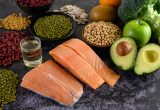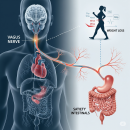GLOBAL DEMAND FOR FOOD

Introduction
Over the last century, the worldwide population has increased four times. Until 1915, there were around 1.8 billion people globally. According to the most fresh estimate by the United Nation, currently, there are 7.3 billion people worldwide and while considering the current pace of growing population, the total populace may reach 9.7 billion by 2050. This growth, along with rising incomes in emerging countries (keeping in view dietary changes like eating more protein and meat) are raising the food demand globally.
Global Demand for Food
Food demand is expected to grow somewhere between 59% to 98% by the year 2050. The change in demand will shape agricultural markets in ways which have never experienced before. Globally, the farmers will need to raise their crop yields, either by enhancing the amount of agricultural land to grow crops or by increasing productivity on existing agricultural lands through fertilizer and irrigation while keeping in view innovative methods such as precision farming.
Food security has been and will continue to be a key driver of socio-political priorities worldwide, regional and at the national level. It is expected that increasing world population, sustainability anxiety and irregular growth of income may lead the current food and agricultural sector with the everlasting issues. These issues may include (1) increasing over-all food availabilities, (2) satisfying the growing diversification of consumers’ basket, and (3) matching higher quality standards such as safety, environment, welfare and ethic, (4) keeping food reasonable. Worldwide production is growing, but still, the level of enhancement as well as agricultural progress patterns varies to a great extent globally. Beyond natural constraints, these differences reflect diverging economic and structural reforms, as well as marketing strategies and, are significantly pertaining to maintaining diversified agricultural landscapes worldwide.
In the past last 50 years, global food demand approximately tripled [1]. This rapid growth caused on the one hand by the doubling of world population from about 3 to more than 6 billion people and on the other hand, increased per-capita demand due to rising living standards. In this article, we define food demand as equivalent to food supply according to FAOSTAT. It explains the daily average availability of food in households in kcal capita−1 d−1, including both food intake and non-eaten household food waste.
Noticing a basic rule of microeconomics, the German statistician Engel observed already in the middle of the 19th century a positive correlation between per capita food demand and income that levels out for high incomes, the so-called “Engel’s Law”. Stillbeside income, per capita demand impacted greatly by other factors that include climate, age and gender composition of the population, food costs, growth of the food industry, globalization and openness to international markets, the degree of urbanization, or transformation in the role of women in society.
Scenarios of future food demand considered as an important instrument to progress strategies for accomplishing the goal of global food security. Scenarios are taken into consideration when uncertainty is too high to allow for predictions. In its place, there are alternative images of the future that “enhance our understanding of how structures work, evolve and interrelate. They can be used to discover possible futures and to localize the regions where most energy is needed to combat hunger. In addition to that, they assist in distinguishing periods in which the issues can expect to continue, such that strategies can be adapted accordingly.
In current times, according to the most recent estimate by the UN, there are 7.3 billion population and can reach 9.7 billion by the year 2050. It is believed that all of this population increase will occur in developing countries. Urbanization will remain at an accelerated pace, and about 70 per cent of the world’s population will be urban (compared to 49 per cent today). Income levels will be many multiples of what they are now. In order to feed this larger, more urban and richer population, food production (net of food used for biofuels) enhanced by 70 per cent. Annual cereal production will need to rise to about 3 billion tonnes from 2.1 billion in present and annual meat production will be required to rise by over 200 million tonnes to reach 470 million tonnes.
Global Demand for Water
There are growing concerns about the effects of climate change on water resources. A number of studies have analyzed such impact at various national levels together with the food security challenges. An ever-increasing amount of evidence suggests that the constant increase in greenhouse gas emissions is badly influencing the global climate and changing the local rainfall system and temperatures. Transformation in the climate expected to result in considerable impacts on global water resources and freshwater ecosystems. The impacts and concentration of climate change will be different in every region. Effects of climate on global water storage capabilities and hydrologic functions will have considerable consequences for water management and planning as variability in natural processes upsurges.
Global Demand in the agriculture sector
The Agriculture sector in the 21st century faces multiple challenges. The experts have analyzed that it has to produce more food and fibre to feed an increasing population with a smaller rural labour force, more feedstocks for a potentially huge bioenergy market, participating to overall progress in many agriculture-dependent developing states.
Factors behind Growing Demand
Population
The increasing demand for food expected to boost considerably by 2050. A major factor for this hype is world population growth. Demographic projections have a high degree of certainty, so projections of future world food requirements based on population growth are quite reliable.
Rising Incomes
Besides population growth, food requirement will rise due to the increasing incomes of people in major developing countries as they move from low income into the middle class. As incomes increase, people like to eat fewer grains and enhance their consumption of meat and high-value foods. This transition requires higher levels of resource utilization. It takes multiple pounds of grain to produce a pound of meat. Therefore, the total pounds of grain utilized by each person, directly as grain and indirectly through meat, grows considerably.















